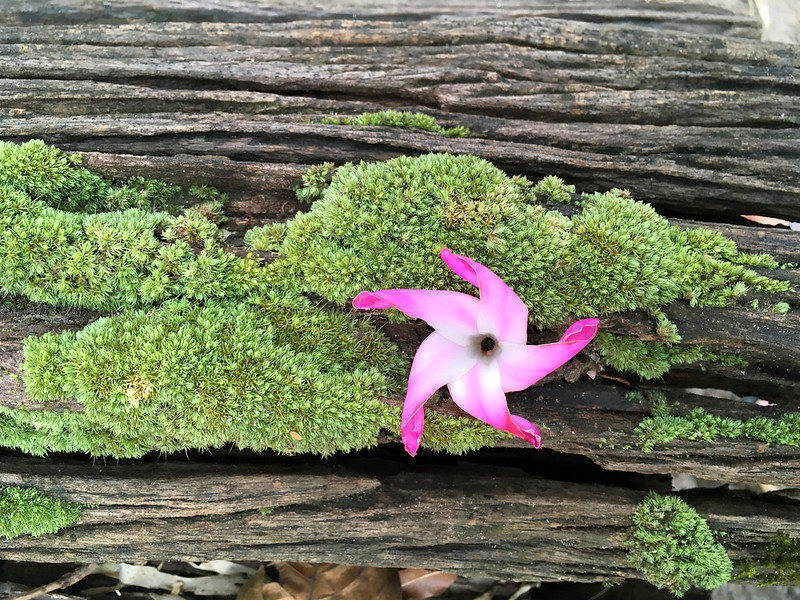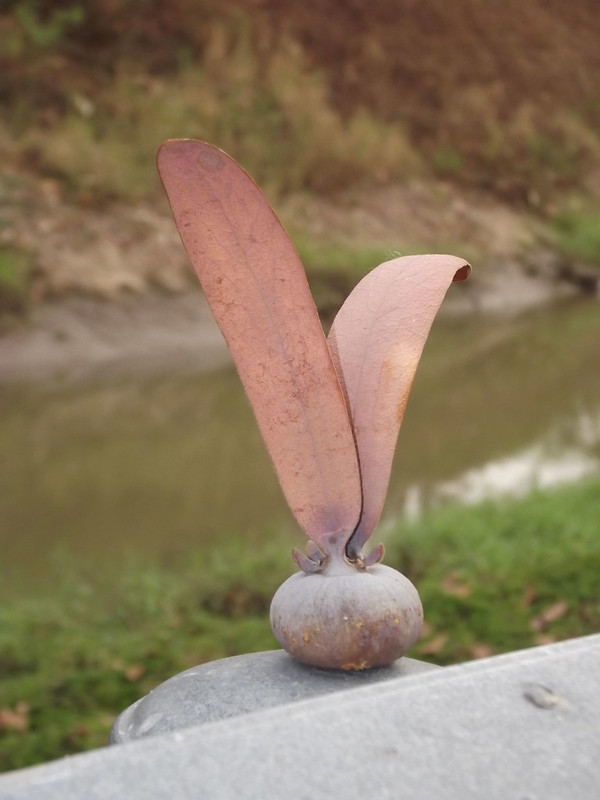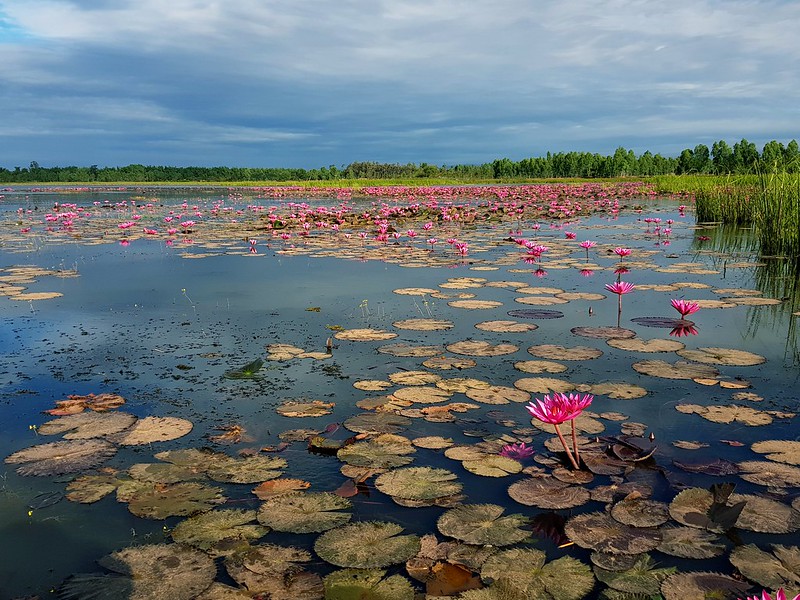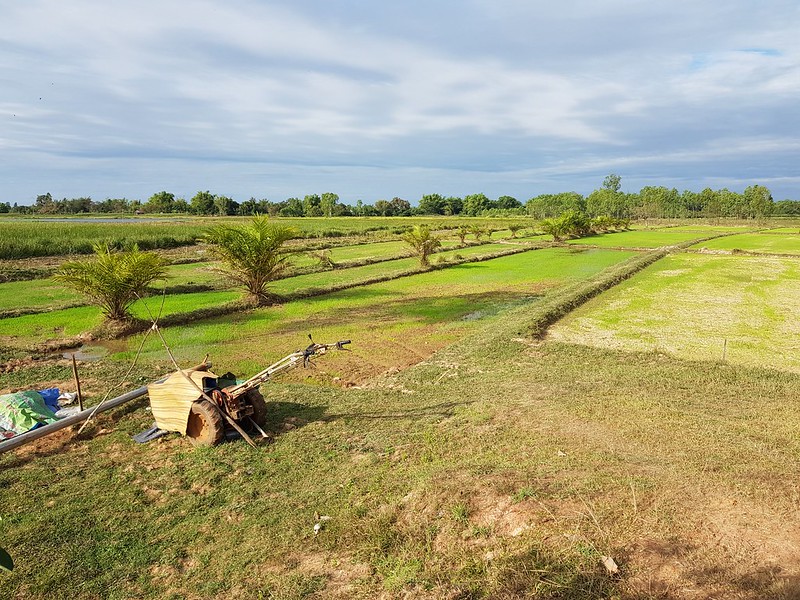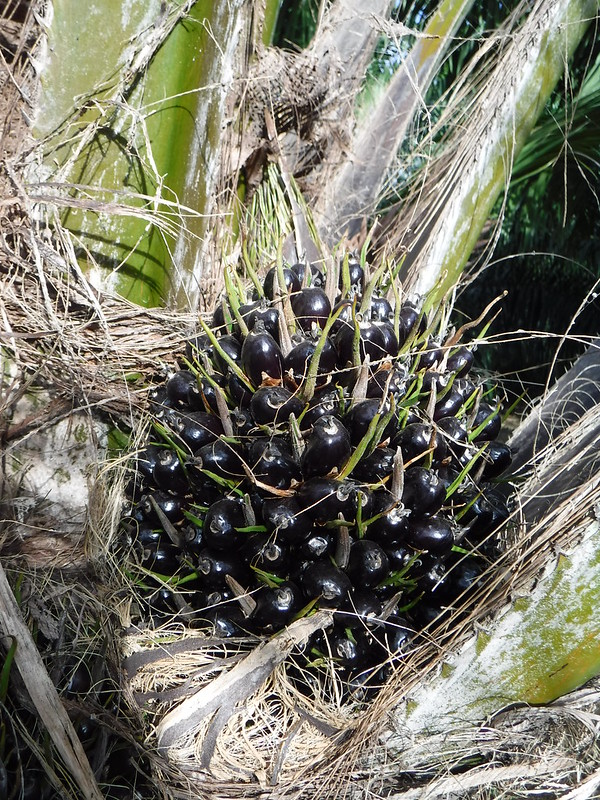On New Year's Day, I asked her if she wanted to go check out some swamps, and she agreed.
So off we went. Our first stop was Huai Ngeum Noi (ห้วยหงีมน้อย)--and no, that's not as easy to pronounce as it looks. At this time of year, Huai Ngeum Noi is covered with pink water lilies. Pink water lilies (Nymphaea pubescens) are native to south and Southeast Asia. It's not unusual to see ponds covered with these water lilies.
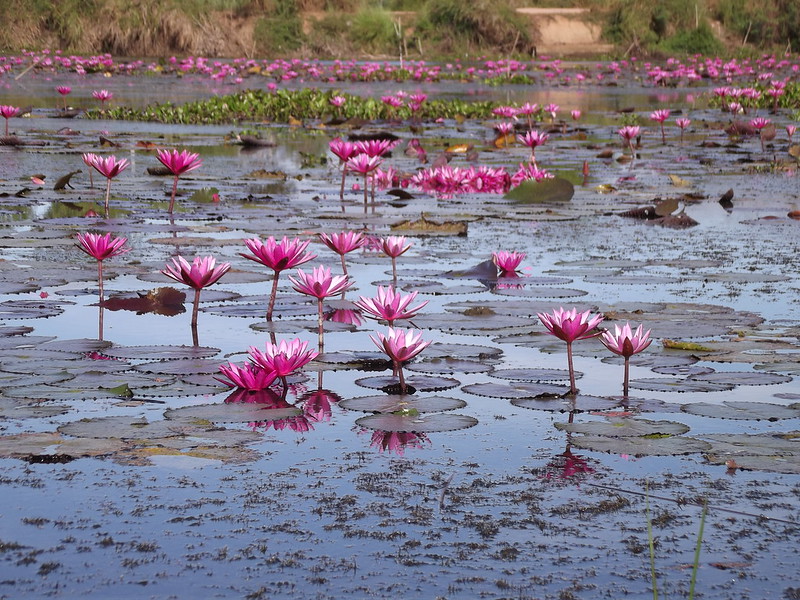 |
| Pink Water Lillies in Huai Nguem Noi |
After a while, we left Huai Nguem Noi to head to another swamp. Along the way we had to pause to let some water buffalo pass.
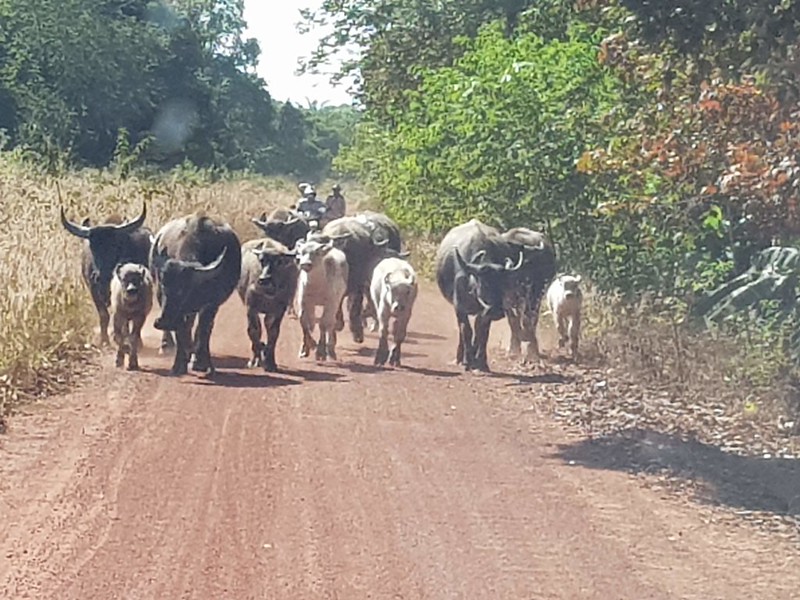 |
| Water Buffalo on the road |
Eventually we got to Huai Plaeo Ngueak (ห้วยเปลวเงือก), which means something like "Mermaid Fire Swamp). This reservoir is quite shallow--if there are any mermaids in it, they must hibernate in the mud during the dry season.
The first thing we noticed were the swaths of yellow flowers all over the pond.
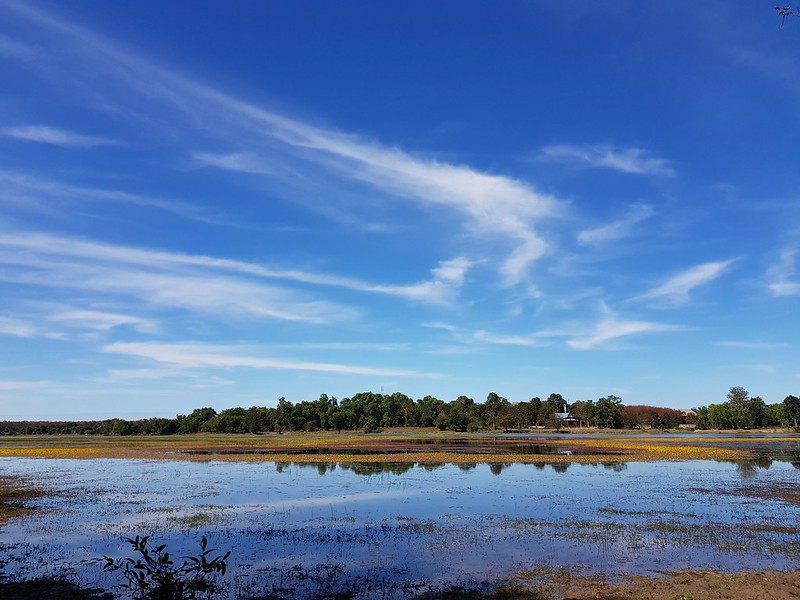 |
| Huai Plaeo Ngueak |
These yellow swaths were from the mosaic flower-an aquatic plant in the evening primrose family (Onagraceae). Like most plants in the evening primrose family, the mosaic flowers have four petals. But it's the leaves of this plant that have a very special character.
 |
| Mosaic plant (Ludwigia sedioides - กระจับแก้ว |
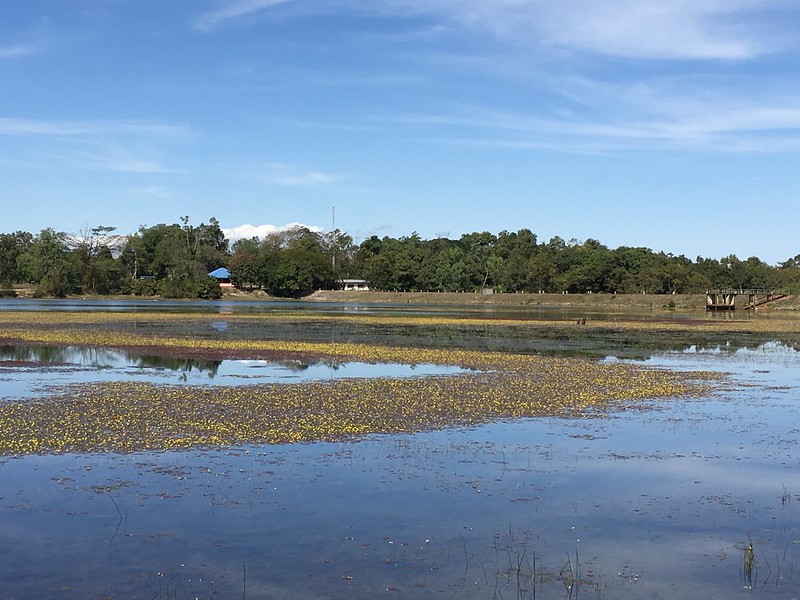 |
| Mosaic plants curving through the swamp |
The mosaic flowers are just one of many flowers growing in Huai Plaeo Ngueak. The mix of the blossoms and leaves can be quite pretty.
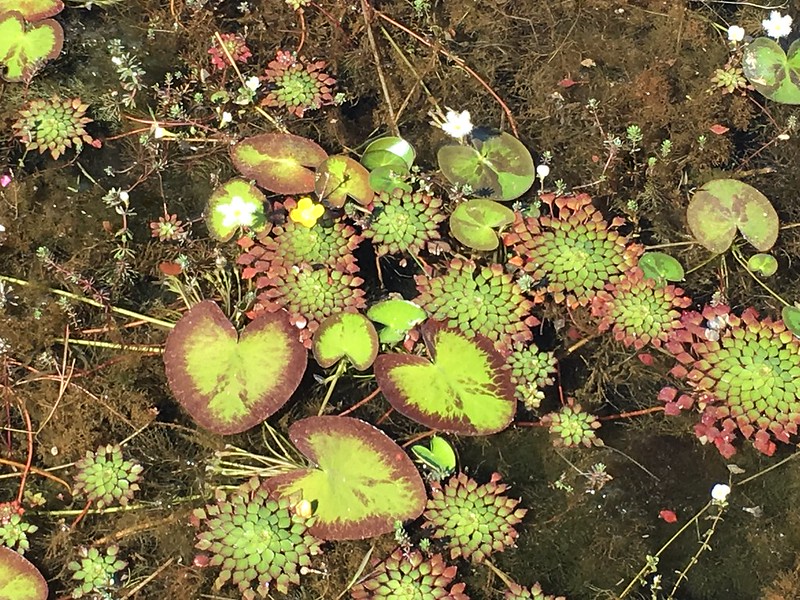 |
| Variety of flowers |
Perhaps one of the showiest flowers in the pond is the water snowflake. If has a beautiful bloom and cute, heart-shaped leaves.
 |
| Water Snowflake (Nymphoides indica - บัวบา) |
Another interesting flower is on a plant in the Gratiola genus in the plantain (Plantaginaceae) family. I first thought it was a kind of monkey-flower. These plants were once classified in the same plant family as monkey flowers (Scrophulariaceae), but with recent genetic studies, they have been reclassified.
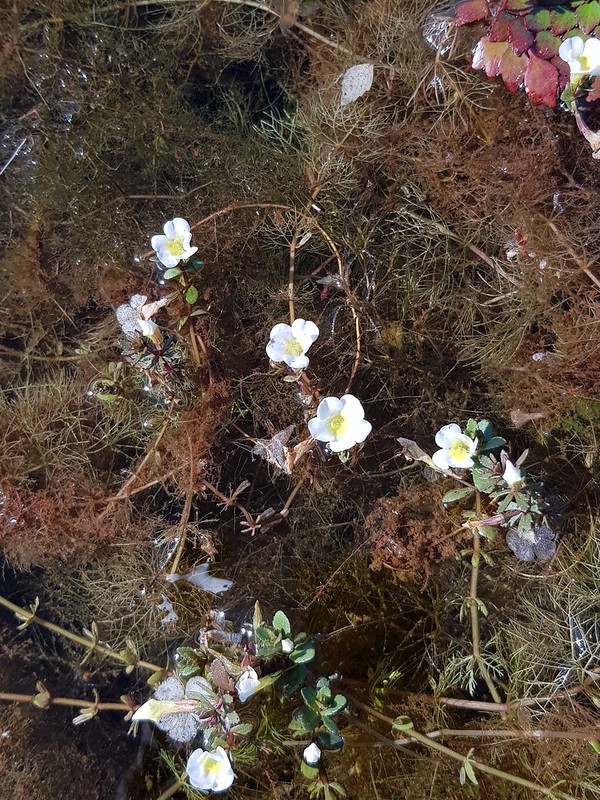 |
| Gratiola sp. |
Golden bladderwort (Utricularia aurea) is a carnivorous flower. A non-vegetarian vegetable, so to speak. They are widely scattered throughout Thailand, but seldom in great numbers.
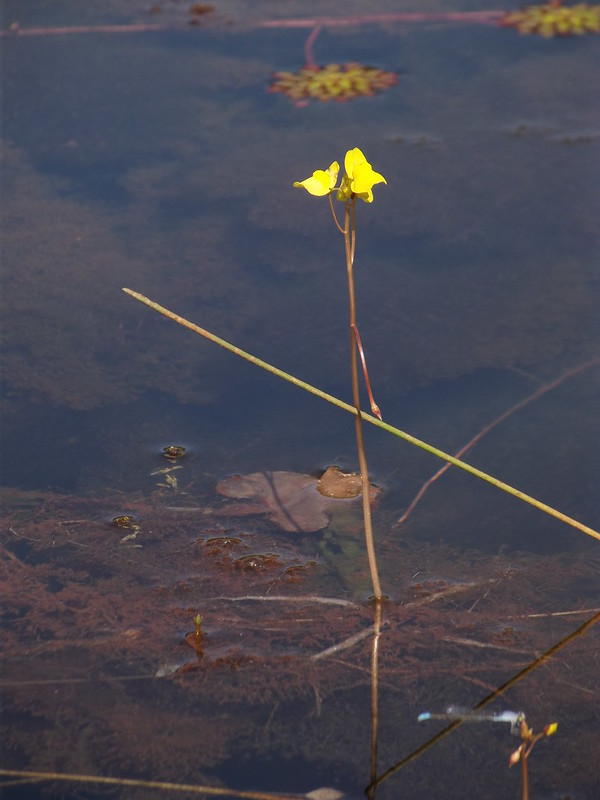 |
| Golden bladderwort (Utricularia aurea - สาหร่ายข้าวเหนียว) |
There were some other flowers present in the lake as well. But we left the water and looked on or near the shore at some of the other things blooming. At the edge of the high water line were lots of pinkish/purple flowers. (The camera makes the flowers seem less blue than the eye sees them.) These are what is known as straits rhododendron (Melastoma malabathricum - โคลงเคลง). These showy flowers are not related to the rhododendrons we know of in North America.
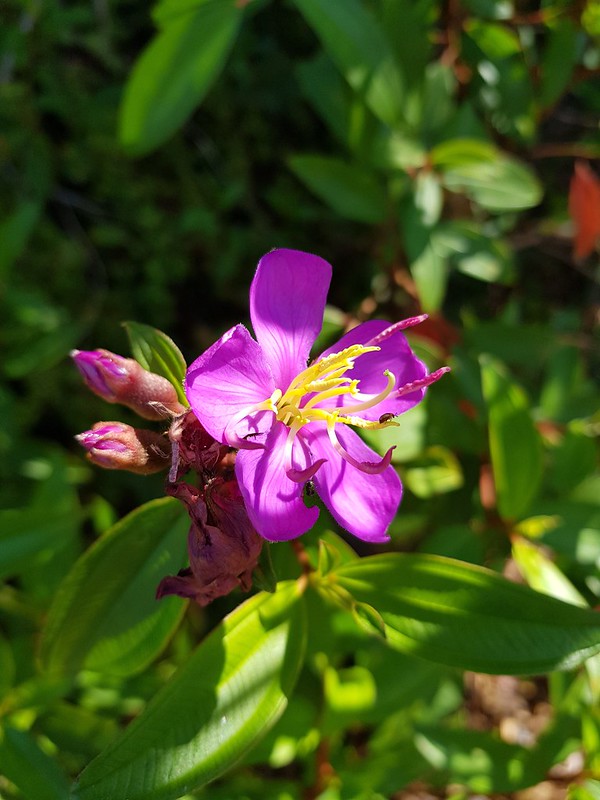 |
| Straits Rhododendron (Melastoma malabathricum - โคลงเคลง) |
A little higher up from the lake was a very fragrant shrub. I don't know what the name of this plant is, but it appears to be something in the mint family (Lamiaceae).
 |
| Sage-like plant |
A little higher, on a dry, sandy, knoll, we found these pretty morning-glory-like flowers that somehow manage to thrive in a not very lush environment.
 |
| Yellow morning glory-like flowers |
As we walked back to our car from the knoll with the yellow morning glories, we were escorted part of the way by a clipper.
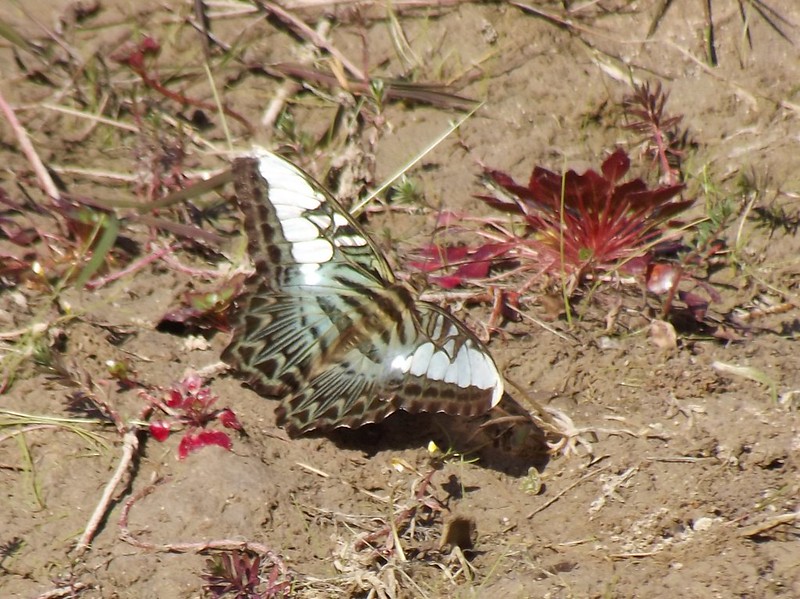 |
| Clipper Butterfly |
And so we started our year with a reminder of the creative genius of our God. The diversity of things that one can find on a small piece of real estate is amazing.
You make springs pour water into the ravines,
so streams gush down from the mountains.
They provide water for all the animals,
and the wild donkeys quench their thirst.
The birds nest beside the streams
and sing among the branches of the trees.
You send rain on the mountains from your heavenly home,
and you fill the earth with the fruit of your labor.
You cause grass to grow for the livestock
and plants for people to use.
Psalm 104:10-14

